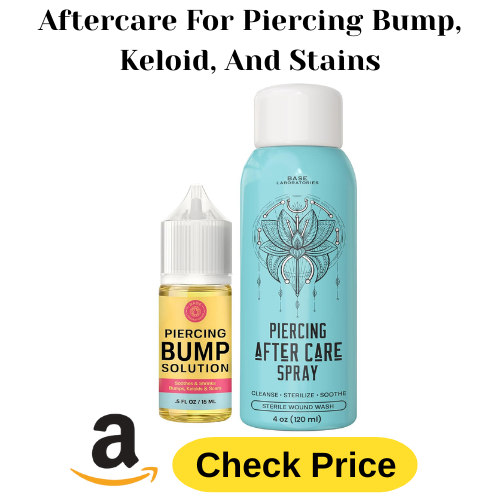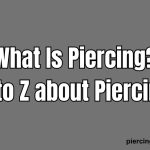Piercing is the practice of creating a hole or opening in a part of the body so that jewelry or other decorative items can be inserted. This form of body modification is often done for aesthetic, cultural, or personal reasons and can be performed on various body parts, such as the ears, nose, eyebrows, lips, tongue, and navel. The process typically involves using a sterilized needle or piercing gun and requires proper aftercare to prevent infection and promote healing.
Piercing Aftercare – Piercing Bump & Keloid Removal Solution
How is Piercing Done
Piercing is done by a professional using a sterilized needle to create a hole in the skin. The jewelry is then inserted into the newly made hole, followed by proper piercing aftercare instructions to ensure safe healing.
- Choosing a Place: It’s important to go to a clean and professional piercing studio.
- Preparation: The person doing the piercing will clean the area and mark the spot where the jewelry will go.
- Piercing: They will use a clean, sterilized needle to make a hole and put the jewelry in.
- Aftercare: After getting a piercing, you need to take good care of it. Clean it regularly and don’t touch it with dirty hands.
Frequently Asked Questions
What body parts can be pierced?
Common body parts for piercing include ears, nose, eyebrows, lips, tongue, navel (belly button), and other areas like nipples and genitals.
Why do people get piercings?
People get piercings for various reasons, including fashion, self-expression, cultural or religious practices, and personal significance.
How is a piercing done?
Piercing is done by a professional who uses a sterilized needle or piercing gun to make a hole in the skin. Jewelry is then inserted into the hole.
Is piercing safe?
Piercing is generally safe if done by a professional in a clean environment. Proper aftercare is crucial to prevent infections and promote healing.
What should I do to care for a new piercing?
Follow the aftercare instructions given by the piercer. This usually includes cleaning the piercing regularly with a saline solution, avoiding touching it with dirty hands, and not removing the jewelry until the piercing is fully healed.
How long does it take for a piercing to heal?
Healing times vary depending on the location of the piercing. Ear lobe piercings typically heal in 6-8 weeks, while cartilage, nose, and other body piercings can take several months to a year.
Can piercings get infected?
Yes, piercings can get infected if not properly cared for. Signs of infection include redness, swelling, pain, and discharge. If you suspect an infection, seek medical advice.
Does getting a piercing hurt?
Pain levels vary from person to person and depend on the piercing location. Most people feel a quick, sharp pain during the procedure, which subsides quickly.
Can anyone get a piercing?
Most people can get piercings, but certain health conditions or allergies might require special considerations. Always consult with a professional piercer and possibly a healthcare provider before getting a piercing




